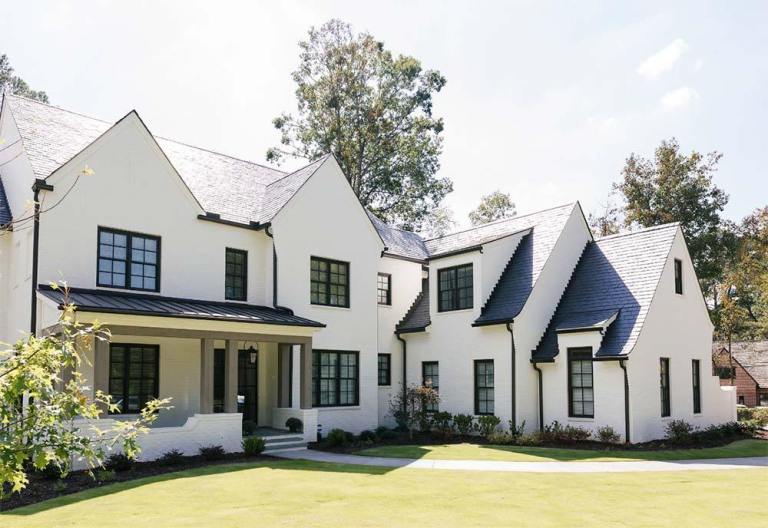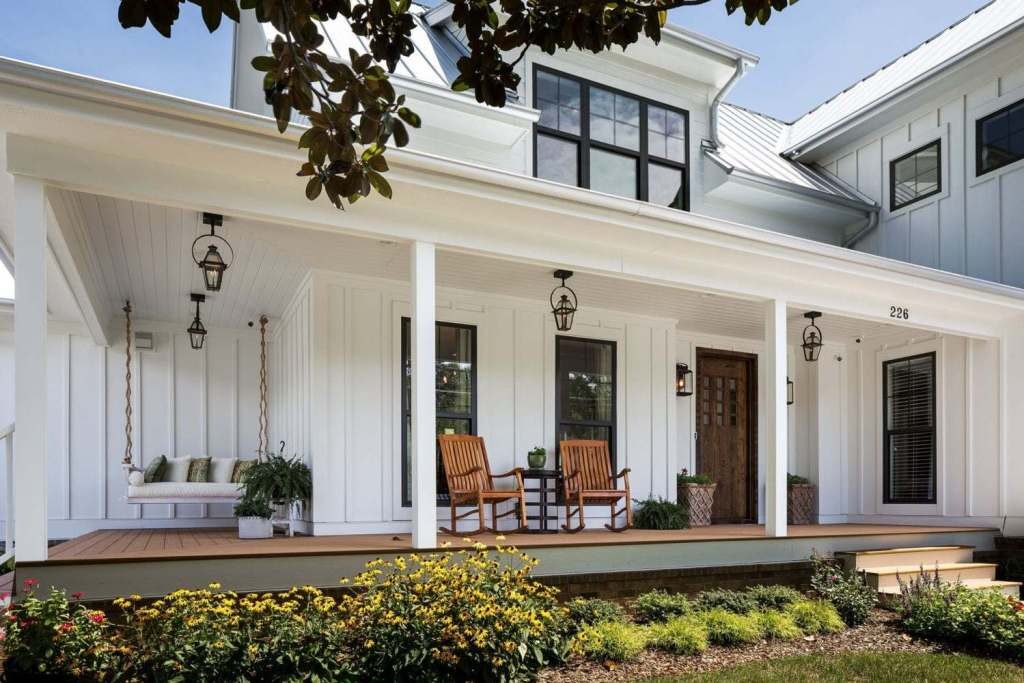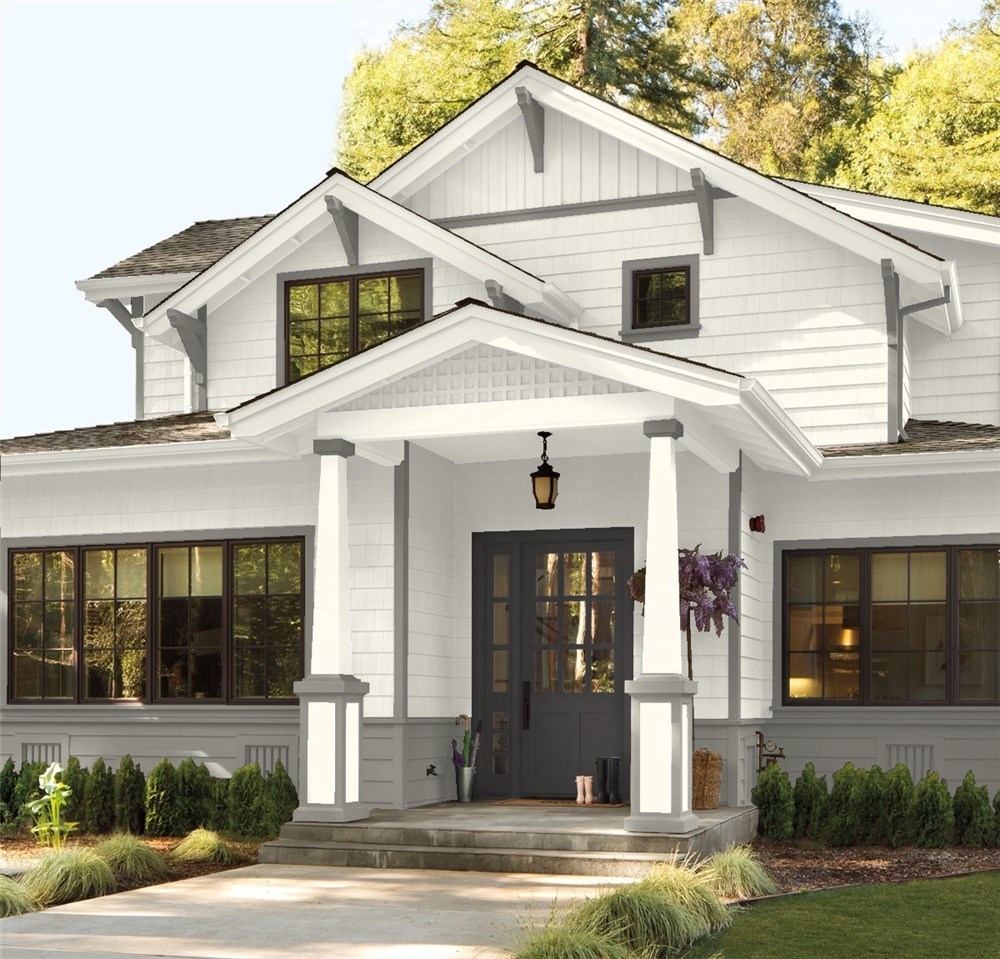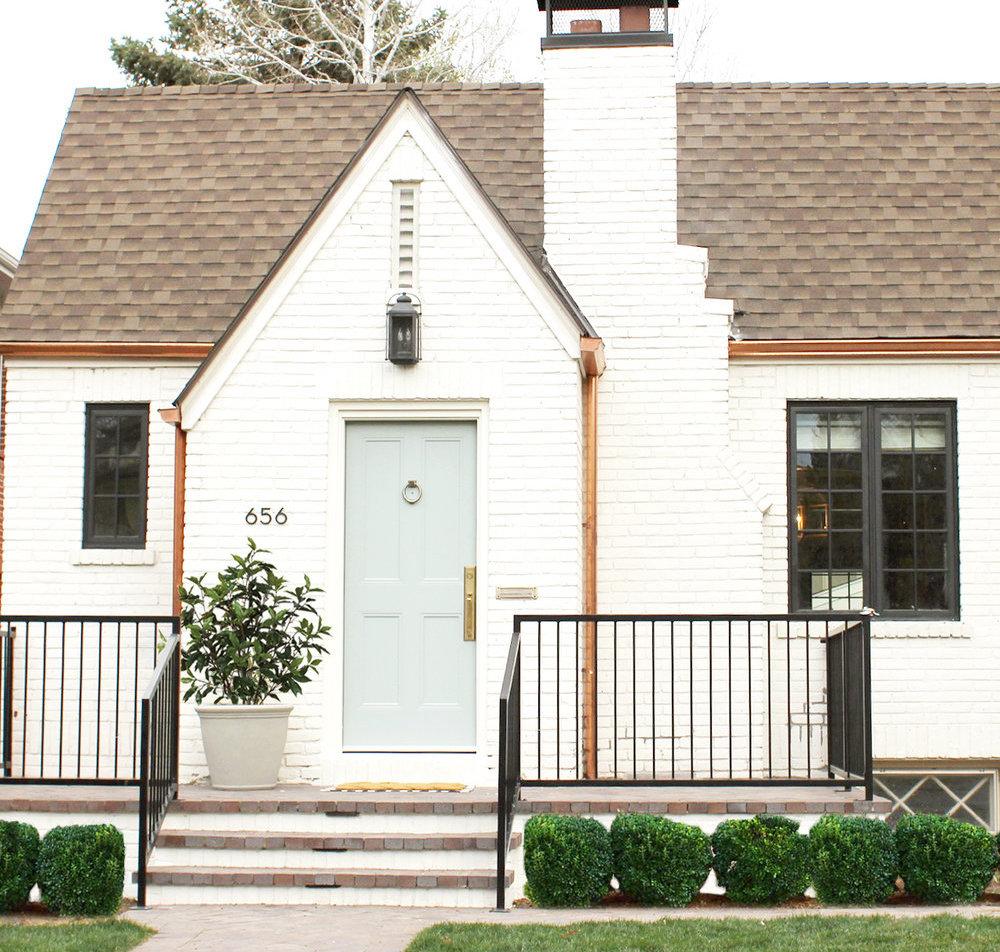How to Paint a Porch
Your porch is often the first thing people see when they approach your home; it may also be an outside space you and your family enjoy using. Protect and maintain itâ”maybe even add a decorative paint specially formulated for these well-travelled areas.
Assess the Condition
Before you paint, prepare your surface for optimal results. Perhaps your porch shows signs of peeling or chipping, or maybe it needs a good cleaning. Important: If you will be removing paint that was applied prior to 1960, it probably contains lead.
There are several steps you can take to reduce your exposure to lead.
Have the painted item replaced.
Have professionals trained in removing lead-based paint do the work.
Each of the following paint-removal methods can produce lead fumes or dust that can be inhaled or ingested. The wet method generates the least amount of airborne fumes and dust.
Wire brushing or wet hand scraping with the aid of a nonflammable solvent or abrasive compound. Read and follow the manufacturerâ™s instructions and warning labels before purchasing and using. It is important to use personal protective equipment (such as gloves, safety glasses and disposable coveralls) when using some paint strippers.
Wet hand sanding and/or power sanding with HEPA filters. Only wet hand sanding and/or an electric sander equipped with a HEPA-filtered vacuum attachment should be used. Dry hand sanding should never be done.
Heat stripping, using a low-temperature heat gun followed by hand scraping. Heat guns pose a fire hazard and can create dust and vapours, so they should be used only by experienced workers wearing respirators.
The following methods of paint removal are hazardous (and in some communities illegal) and should NOT be used:
Open flame burning or torching
Machine sanding or grinding without a HEPA attachment
Abrasive blasting or sandblasting
Power washing without a method to trap water and paint chips

THE BEST WHITE PAINT COLORS FOR EXTERIORS
You’ve seen them, right? The gorgeous, white, modern farmhouse style houses that are popping up all over the place? Maybe, you’ve even been thinking about painting your house white. White can be a beautiful, but tricky paint color for exteriors…too bright, and you risk blinding drivers passing by…too dark, and it just looks “muddy.” If you’re considering painting your house white, keep reading this post! I’ve rounded up the best white paint colors for exteriors, so you can be sure to have that gorgeous white house you’ve been dreaming of.
First things first…let’s talk about LRV (Light Reflectance Value). I know you were ready to dive into paint colors, and I’m being a total buzzkill, but LRV is important for white exteriors. LRV is a measure of how light or dark a paint color is on a scale of 0 (darkest) to 100 (lightest). I really don’t want to go into too much detail, because the specifics are a bit boring, but a good rule of thumb is that an exterior LRV should be no higher than 85. If you get higher than 85, you’re gonna need sunglasses to look at your house. A good white exterior paint should have an LRV between 73-ish to 85. You can find the LRV of a paint color on the manufacturers website. There you go…LRV lesson is over.
White Dove
White Dove is the brightest white on this list with an LRV of 85, and is a popular choice for a beautiful, pure white exterior. If you compared it to true white, however, you’d see that White Dove is actually a soft, warm white with a hint of gray, which makes it one of the most beloved whites amongst designers for both interiors and exteriors. Go with White Dove if you have a house that gets lots of shade, and/or you want that crisp and clean white look.
is a little lower on the LRV scale at 78. It has gray undertones, which tends to make it a slightly cooler shade of white. It has enough color to stand out against a bright white trim, and pairs beautifully with blue or green accents
is a fabulous white for exteriors. It can sometimes look a bit dingy when used for interiors, but when you paint it outside, it blossoms into a beautiful, clean white. It has a warm, neutral look, without looking too creamy or being too bright. If you have dark brown or bronze exterior accents, this is a great choice.

The Best White Modern Farmhouse Exterior Paint Colors
If you only know one thing about white paint, it should be that they are not all the same. With the rising popular of white homes, the number of choices has become overwhelming, and it’s impossible to tell what something really looks like from a swatch. So we’ve put together the best list to get your started: eight popular paint colors for that perfect white Modern Farmhouse exterior. Plus, read to the end to find out which of these whites we always recommend on our homes!
China White
China White is a pretty good true white, yet has a denser, richer appearance. In darker interior spaces it will lean a dimmer greige, but on exteriors it provides a soft, bright white
Chantilly Lace
Chantilly Lace is perhaps the brightest, true white option. It’s fresh and clean, and just barely leans towards cool toned. Perfect if you want a crisp, stark look!
White Dove
Soft and creamy, White Dove has barely a hint of gray, but remains bright and warm. It also very closely matches
Pure White
Pure White is aptly named, as it has just the tiniest bit of tint to take off some of the icy edge. Will definitely give you a crisp, clean look, and looks dreamy in soft light.

PAINTING OUR BRICK HOUSE WHITE!
The weather hasn’t been perfect for photos and our landscaping isn’t looking it’s finest at the moment, but I couldn’t give two flying squirrels because I’M SO FREAKING EXCITED ABOUT OUR PAINTED BRICK HOUSE THAT I LITERALLY CANNOT EVEN. I am unable to even. And I’m a 36 year old suburban mom, so that’s saying something.
Today we’re gonna break it all down – what type of paint we used, why we chose it, how the process went, how much it cost, all that good stuff. And I’ll try to go easy on the exclamation points. No promises, though
The short answer is that we wanted to. This is our third brick house and I’ve daydreamed about painting ALL of them at some point, so this is basically a 12+ year fantasy that has finally been realized
has been interested in the idea, but he is so dang practical. So his concerns about maintenance or it showing green mildew and stuff like that have always convinced him that it was a bad idea. But after discussing it on our podcast this summer, a lot of our listeners soothed our fears (we heard from dozens of people who have lived in a painted brick house for 10+ years with zero brick maintenance) and then we found a product that gave us the confidence to go full steam ahead. More on that in a minute.
This house, of all of our brick houses, felt like it was the perfect candidate for a painted exterior. We’ve always loved how stately it feels from the curb, and the way it’s situated at the end of the street and framed by large trees just felt like it was poised for greatness. It was also built in the early 80’s, so it wasn’t lovely historic brick that we’d be painting over

PAINTING EXTERIOR MURALS
SURFACE CONSIDERATIONS
If the mural is not an existing structure, but will be constructed specifically for your artwork, carefully consider the choice of building materials to be painted. For example, there are many plywood grades available. MDO plywood (Medium Density Overlay), often referred to as “sign painters board”, is a high-quality plywood that is made to be used outdoors. It could also be attached to a wooden, metal or brick wall before painting a mural. This would offer the artist a surface that is clean, smooth and can be painted indoors in the studio, rather than on a scaffold at the mural site.
Painting an Existing Surface
If factors dictate painting directly onto a pre-existing surface, preparation is a major factor in the longevity of the mural.
Surface Cleaning Considerations
The artist must be concerned with the nature of the surface to be painted. If the surface is already painted, then consider what kind of paint it is and its physical condition (the artist should realize that any surface that still has the previous coating on it will not be as permanent as one that has been completely stripped and freshly coated). If the paint is a water-based polymer
paints will adhere sufficiently. If it is a high gloss oil paint (or of unknown materials), then it must be abraded (or removed) for good adhesion. If the existing paint film is deteriorating, then it is best to have it removed (sandblasted, power-washed, scraped, etc. ). It is critical to wash any painted surface, even a newly painted surface, with soap and water prior to application of acrylic products. A major coatings manufacturer states that as much as 80% of all coatings failure can be directly related to insufficient surface preparation.
Mold and Mildew
Mold and mildew must be removed by hand scrubbing with a mixture of 1 part household bleach to 3 parts water. CAUTION: Never add ammonia or ammonia-based cleaners to bleach! Wear goggles and protective equipment while cleaning. After scrubbing with a brush, allow the solution to sit on the surface for 10 minutes before thoroughly rinsing off with clean water.